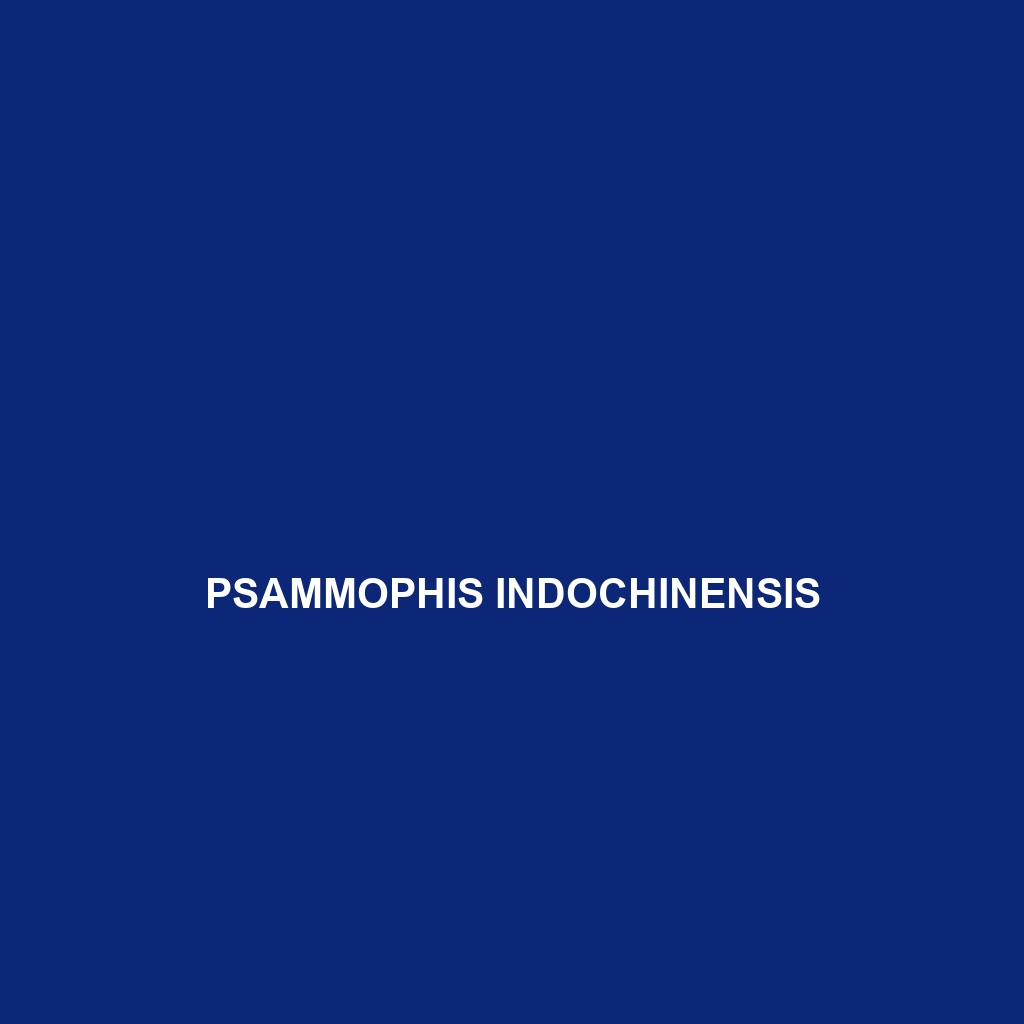<b>Psammophis schokari</b>, known as the Schokar Sand Snake, is a slender, diurnal snake native to North Africa and the Middle East, typically measuring 60 to 100 cm in length. Adapted to sandy habitats, it exhibits excellent camouflage, preying on small vertebrates while showcasing unique behaviors like burrowing and slight color change for effective hiding.
Tag: sandy habitat reptiles
Psammophis indochinensis
<b>Psammophis indochinensis</b>, also known as the Indochinese Sand Snake, is a slender, nocturnal species native to Southeast Asia's tropical habitats, featuring a mix of browns and yellows with darker bands for camouflage. This carnivorous snake primarily preys on small mammals and lizards, playing a crucial role in its ecosystem as both a predator and prey.
Psammophis schokari
<b>Psammophis schokari</b>, known as the Schokar Sand Snake, is a slender, diurnal snake native to North Africa and the Middle East, typically measuring 60 to 100 cm in length. Adapted to sandy habitats, it exhibits excellent camouflage, preying on small vertebrates while showcasing unique behaviors like burrowing and slight color change for effective hiding.
Psammophis indochinensis
<b>Psammophis indochinensis</b>, also known as the Indochinese Sand Snake, is a slender, nocturnal species native to Southeast Asia's tropical habitats, featuring a mix of browns and yellows with darker bands for camouflage. This carnivorous snake primarily preys on small mammals and lizards, playing a crucial role in its ecosystem as both a predator and prey.
Phrynosoma sherbrookei
Discover the Sherbrooke horned lizard (Phrynosoma sherbrookei), a captivating desert creature known for its unique flattened body and horn-like projections. Thriving in Western North America's diverse habitats, this insectivorous lizard plays a vital role in the ecosystem while exhibiting intriguing behaviors, including temperature regulation and distinctive courtship displays.
Phrynocephalus ornatus
Phrynocephalus ornatus, commonly known as the ornate toad-headed agama, is a resilient lizard native to the arid deserts and steppes of Central Asia. Known for its flattened body, vibrant coloration, and distinctive spade-like snout, this insectivorous species showcases unique behaviors and plays a vital role in its ecosystem, controlling insect populations while serving as prey for larger predators.
Lerista uniduo
<p>Discover the fascinating <b>Lerista uniduo</b>, a small, elongated lizard native to Australia’s arid regions, known for its distinctive burrowing abilities, nocturnal behavior, and vital role in controlling insect populations. This species features sandy to light brown coloration and exhibits intriguing courtship rituals during its breeding season.</p>
Lerista dorsalis
<p>The <b>Lerista dorsalis</b>, commonly known as the sandy skink, is a diurnal insectivore found in sandy habitats of southeastern Australia. Notable for its slender body, smooth scales, and cryptic coloration, it plays a critical role in the ecosystem by controlling insect populations and serving as prey in the food web.</p>
Delma tincta
Delma tincta, commonly known as the Delma, is a slender, nocturnal reptile found in the arid regions of Australia, characterized by its smooth, shiny scales and burrowing abilities. This vulnerable species primarily feeds on insects, playing a vital role in maintaining ecological balance while exhibiting remarkable adaptations to survive in harsh environments.
Ctenotus halysis
Experience the fascinating Ctenotus halysis, or shiny Ctenotus, a medium-sized lizard found in Australia's arid landscapes, known for its striking coloration, fossorial behavior, and vital role in controlling insect populations. This adaptable species thrives in sandy soils and plays a crucial part in maintaining its ecosystem's balance.









